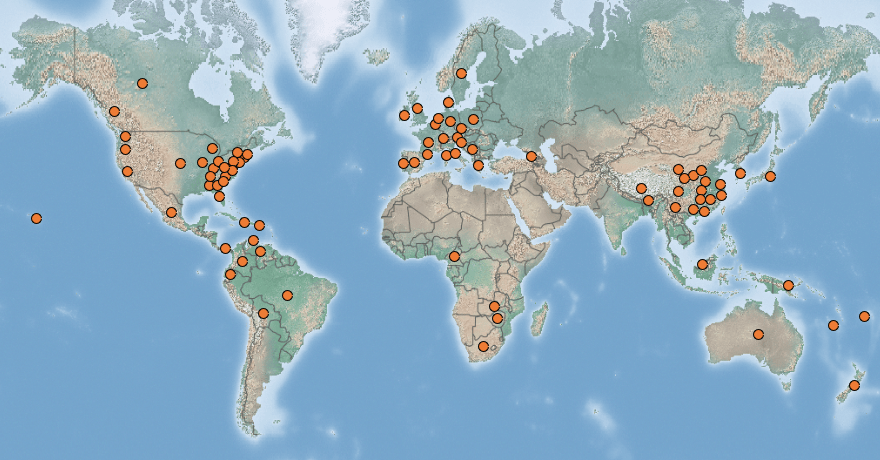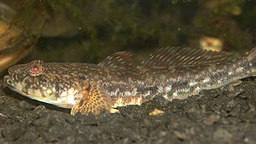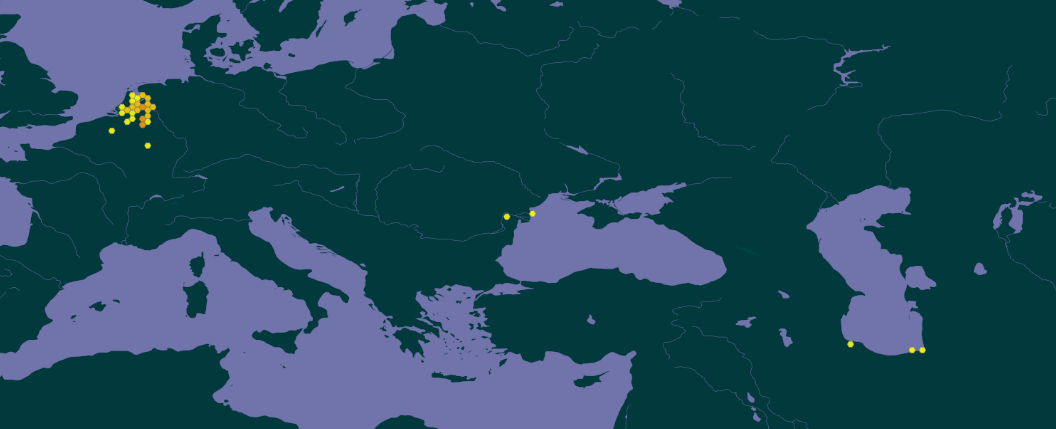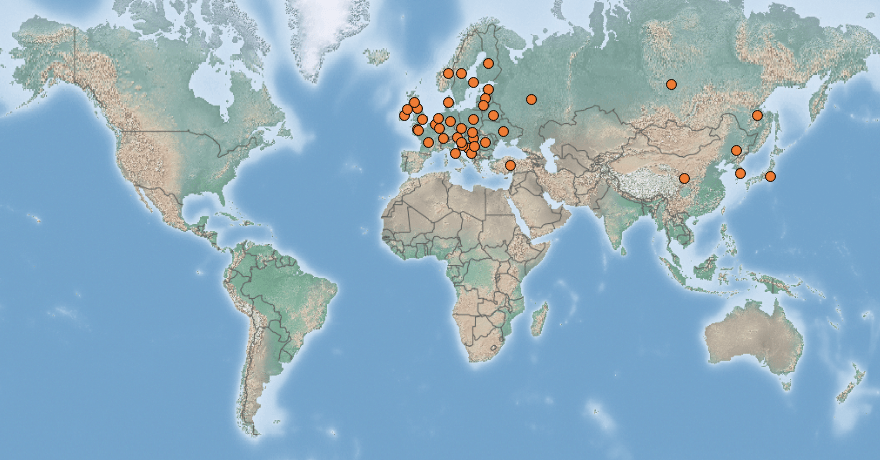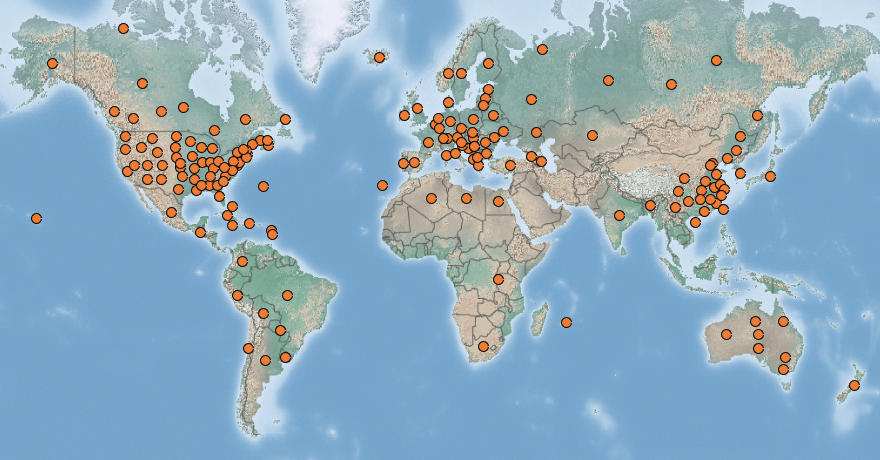 |
Japanese rose | Status LU: established. 1st record: LU <1923, ITW 2002. |
 |
Geradderegt Rous | Status Eur.: established. 1st record: 1796.1 |
 |
Rosier rugueux | RA: ISEIA: C1. Harmonia+: 0,18. |
 |
Kartoffel-Rose | Wikipedia: |
 |
Rimpelroos | Back to the list of neophytes |
Contents
Brief description

Rosa rugosa forms extensive impenetrable thickets due to root and stem suckering. It displaces the natural flora of beach and dune vegetation and outcompetes early successional plant species in these habitats (Arenaria serpyllifolia, Empetrum nigrum, Festuca rubra, Veronica arvensis, Viola tricolor, etc.). Thickets of R. rugosa are species-poor, irrespective of the dune type on which the shrub has established. They change humus conditions, favour the installation of other neophytes like Lupinus polyphyllus and Parthenocissus inserta and alter habitat structure through shading effect and initiation of dune formation. They may also act as a reservoir for potential pest species like gall-forming insects. Hybrids with native Rosa species occur (Branquart et al. 2010).
Status and distribution in Luxembourg
Records of Rosa rugosa Thunb. in Luxembourg. Data source: Recorder-Lux, iNaturalist & GBIF, 2025-12-18.
Rosa rugosa Thunb. is commonly planted in public green areas and private gardens in Luxembourg since a long time, as documented in old newspapers (Anonym 1923): “Large-fruited rosehips Rosa rugosa and Rosa villosa are popular rosehip varieties for conserving.”2 We thus consider the first record of Rosa rugosa as cultivated species to be anterior to 1923.
Rosa rugosa Thunb. was first documented in the wild by Guy Colling on 15th June 2002 in the Stréissel nature reserve, north of the municipality of Bettembourg (MNHNL 2000-).
Currently, 15 records of Japanese rose are accessible through the MNHNL-mdata portal (MNHNL, iNaturalist & GBIF 2019).
The east Asian melliferous species is often cultivated for ornamental purposes in parks and along roadsides. Subspontaneous or naturalised: coastal dunes, roadsides, embankments, stream banks, especially in the west (Lambinon & Verloove 2012: 362).
Risk assessment
ISEIA protocol
C1 (1+1+1+1) (Ries et al. 2013: 19).
Harmonia+ protocol
Overall risk score 0,18 = (Overall Invasion score 0,45 x Overall Impact score 0,38) (Ries et al. 2020).
 Invasion
Invasion0,38

 Impact
Impact0,18

 Risk
RiskWorldwide distribution
Bibliography
- Anonym, 1923. Hof, Garten, Land. Praktische Winke für den Kleingärtner und Tierhalter für den Monat April. Rubrik. Obermosel-Zeitung 55: 2 (1923-04-07).
- Branquart Etienne, Vanderhoeven Sonia, Van Landuyt Wouter, Van Rossum Fabienne, Verloove Filip
- Branquart, E., S. Vanderhoeven, W. Van Landuyt, F. Van Rossum & F. Verloove, 2010. Harmonia database: Rosa rugosa Thunb.. Harmonia version 1.2, Belgian Forum on Invasive Species. URL: http://ias.biodiversity.be [accessed on 2019-10-15]
- CABI, 2019. Rosa rugosa. In: Invasive Species Compendium. Wallingford, UK: CAB International. URL: www.cabi.org/isc [accessed 2020-03-02]
- Lambinon J. & F. Verloove, 2012. Nouvelle flore de la Belgique, du grand-duché de Luxembourg, du Nord de la France et des régions voisines. Sixième édition. Avec la collaboration de L. Delvosalle, B. Toussaint, D. Geerinck, I. Hoste, F. Van Rossum, B. Cornier, R. Schumacker, A. Vanderpoorten et H. Vannerom. Jardin botanique national de Belgique, Meise. CXXXIX + 1195 pp. ISBN : 9789072619884.
- MNHNL, 2000-. Rosa rugosa Thunb. in Recorder-Lux, database on the natural heritage of the Grand Duchy of Luxembourg. Musée national d’histoire naturelle, Luxembourg. URL: https://mdata.mnhn.lu [Accessed 2019-10-15]
- MNHNL, iNaturalist & GBIF, 2019. Rosa rugosa Thunb. in MNHNL-mdata, online portal combining species observation from Recorder-Lux, iNaturalist and GBIF. National Museum of Natural History, Luxembourg. URL: https://mdata.mnhn.lu [Accessed 2019-10-15]
- Ries, C. & Y. Krippel, 2021. First records of 56 invasive alien vascular plants in Luxembourg. Bulletin de la Société des naturalistes luxembourgeois 123: 115-127. [PDF 241 KB]
- Ries, C., Y. Krippel & M. Pfeiffenschneider, 2020. Risk assessment after the Harmonia+ protocol of invasive alien vascular plant species in Luxembourg. Bulletin de la Société des naturalistes luxembourgeois 122: 197-205. [PDF 132 KB]
- Ries, C., Y. Krippel, M. Pfeiffenschneider & S. Schneider, 2013. Environmental impact assessment and black, watch and alert list classification after the ISEIA Protocol of non-native vascular plant species in Luxembourg. Bulletin de la Société des naturalistes luxembourgeois 114: 15-21. [PDF 652 KB]
Page content last updated on 2021-03-11. Last proofread by Caroline Grounds on 2019-11-21.








